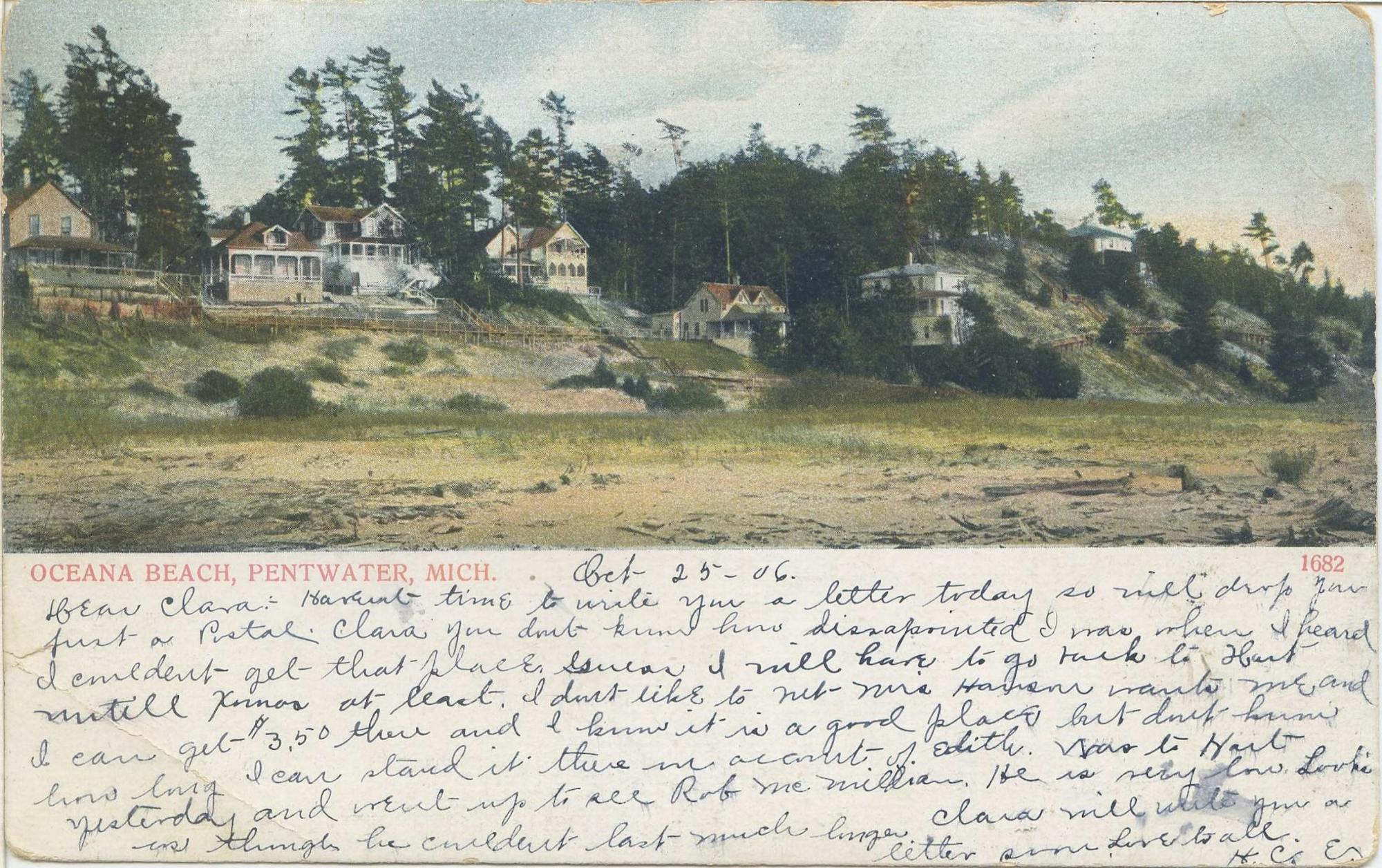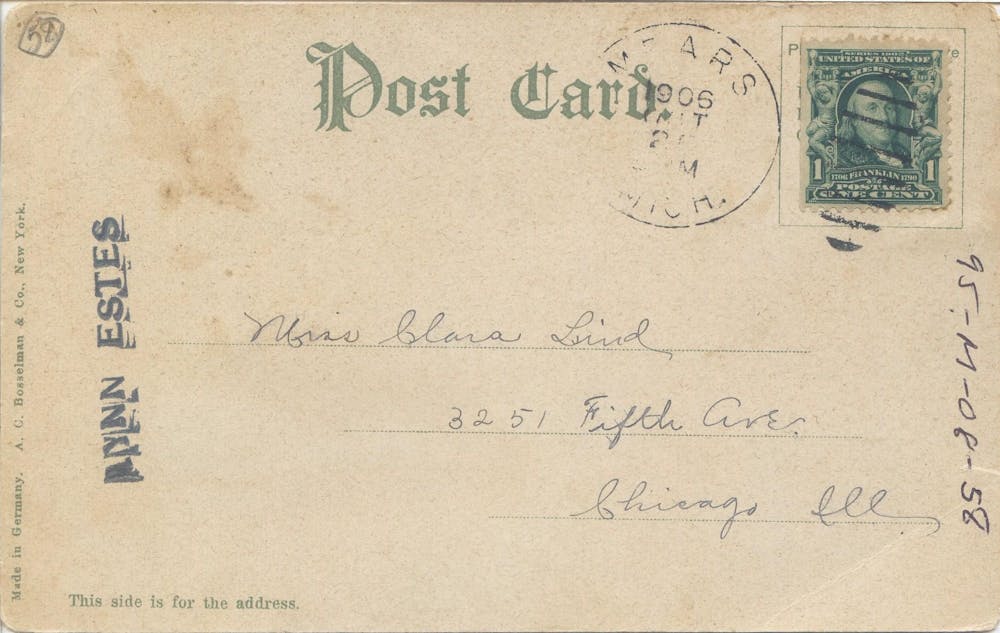This week’s postcard is another example dated to over a century ago, 1906 to be exact. What struck me most about this one was the format. The photograph takes up about two-thirds of the front of the postcard, with a space left at the bottom for a brief message - as you will soon learn, the message scrawled at the bottom of our example was anything but brief.
The photograph is credited as being of “Oceana Beach, Pentwater, Mich.,” and featured seven houses perched on dune bluffs overlooking the beach, which features a remarkably low water line. Between the houses, all sweeping verandas and multiple stories, are pines towering twice the size of the already significantly tall structures, the lakeshore wind captured in the way the trunks bow inland. The scene looks almost innocuous, something we today might witness walking along the beaches of Pentwater.

What’s even more striking, and tricks the brain into perceiving the photo as more recent than it actually is, is that the postcard is in color. Many folks may not know this, but color photography is quite a bit older than we might realize. For almost as long as we’ve had photography, inventors have been looking for ways to accurately capture the world as it is in all its hues. The process seen on the postcard is an example of the most commercially widespread at the beginning of the 20th century: autochrome. The autochrome color technique was invented by the Lumière brothers of cinema history fame and was available for commercial use as early as 1903. By the 1920s, thousands of postcards were being reproduced from autochrome photographs and saw widespread commercial use, though, granted, at a much higher expense than black and white photographs.
As I mentioned earlier, the entire message - sent to a Miss Clara Lind of 3251 Fifth Ave, Chicago, IL - squeezed onto the small blank space on the front of the postcard is as follows:
“October 26 - ‘06
Dear Clara - Haven’t time to write you a letter today so will drop you just a postal. Clara you don’t know how dissapointed [sic] I was when I heard I couldn’t get that place. Guess I will have to go back to Hart until Xmas at least. I don’t like to but Mrs Hansen wants me and I can get $3.50 there and I know it is a good place but don’t know how long I can stand it there on account of Edith. Was to Hart yesterday and went up to see Rob McMillan. He is very low. Looks as though he couldn’t last much longer. Clara will write you a letter soon. Love to all.
H.C.E.”
From what I can gather, H.C.E. is a friend of Miss Clara, who is mourning the rejection of either a housing or job opportunity and will have to return to their hometown for the time being. We’ve all been there, haven’t we? Thankfully, he or she seems to have secured employment and board from a Mrs. Hansen. $3.50 was about $125 in 1906 money, but I cannot figure if that rate is per day or a total for the projected work until Christmas. The only issue seems to be Edith, and let me say that “on account of Edith” is the second reason this postcard caught my eye. Who is Edith? What did she do? I am pleading with a postcard to reveal this century-past drama.

Insofar as the players in this story: Clara Lind is mentioned about 10 years later in the Mears Newz on the occasions she visits home to see her family. The Linds seem to have been prominent business owners in Oceana. The identity of H.C.E. is, of course, a bit difficult to parse. Clara’s sister Grace seems to be friends with Mary Edlund, so my only guess is that H.C.E. is another Edlund. Trolling the archives reveals only Hadden, Hannah, and Herman Edlund. However, I am not confident any of these are our H.C.E.
Now, I do have one Edith connected to Clara Lind, Edith Holcomb, but again, that is not necessarily our perpetrator - Edith was a popular name back then, after all. This is just what I’ve discovered through connecting red strings in between various names like a film noir detective on the verge of a mental break. At least for our one full-named individual, Rob McMillan did not recover from whatever ailment he suffered, as his headstone in Hart Cemetery reads 1884-1906, rather tragic as he was only 22.
As for any connection between the postcard photo and the sender/sendee, perhaps this was just a beloved sight, or maybe H.C.E. worked for one of the owners of the houses pictured, or maybe H.C.E. felt really awful about their tardiness sending Clara a letter and thought she might be assuaged by the flashy autochrome photograph.
As always, if any readers have any information that may help me get to the bottom of interpersonal drama from 119 years ago, it is much appreciated.













